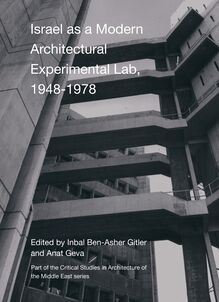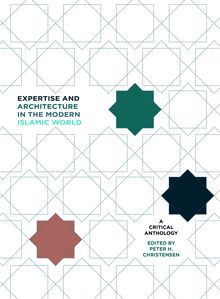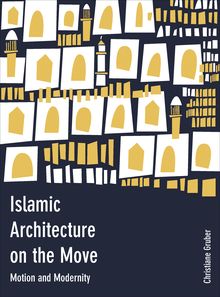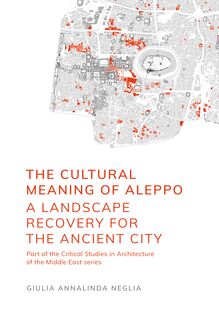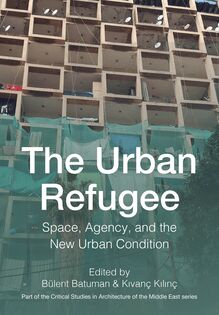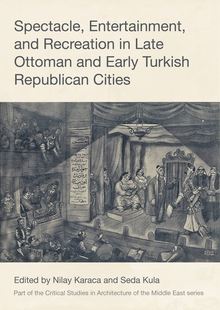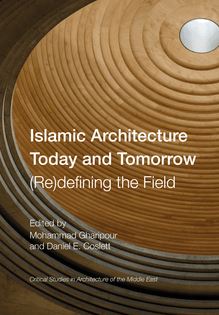-
 Univers
Univers
-
 Ebooks
Ebooks
-
 Livres audio
Livres audio
-
 Presse
Presse
-
 Podcasts
Podcasts
-
 BD
BD
-
 Documents
Documents
-
- Cours
- Révisions
- Ressources pédagogiques
- Sciences de l’éducation
- Manuels scolaires
- Langues
- Travaux de classe
- Annales de BEP
- Etudes supérieures
- Maternelle et primaire
- Fiches de lecture
- Orientation scolaire
- Méthodologie
- Corrigés de devoir
- Annales d’examens et concours
- Annales du bac
- Annales du brevet
- Rapports de stage
La lecture à portée de main
Vous pourrez modifier la taille du texte de cet ouvrage
Découvre YouScribe en t'inscrivant gratuitement
Je m'inscrisDécouvre YouScribe en t'inscrivant gratuitement
Je m'inscrisEn savoir plus
Vous pourrez modifier la taille du texte de cet ouvrage
En savoir plus

Description
Concerned with the relationship between Friday mosque and city in the Islamic context. Focusing particularly on the Friday mosque, the book aims at exploring the concept of liminal(ity) in spatial terms and discuss it in terms of the relationship between the Friday mosque and its surrounding urban context. Transition spaces/zones between the mosque and the urban context are discussed through the case studies from various contexts. In doing so, the manuscript reveals different forms of liminality in spatial sense.
Considers widely-studied topics such as the ‘Friday mosque’ or the ‘Islamic city’ through a fresh new lens, critically examining each case study in its own spatial urban and socio-cultural context. While these two well-known themes – concepts that once defined the field – have been widely studied by historians of Islamic architecture and urbanism, this collection specifically addresses the functional and spatial ambiguity or liminality between these spaces. Thus, instead of addressing the Friday mosque as the central signifier of the ‘Islamic city’, the articles in this volume provide evidence that there was (and continues to be) a tremendous variety in the way architectural borders became fluid in and around Friday mosques across the Islamic geography, from Cordoba to Jerusalem and from London to Lahore.
By historicizing different cases and contributing to our knowledge of the way human agency through ritual and politics shaped the physical and social fabric of the city, the papers collectively challenge the generalizing and reductionist tendencies in earlier scholarship. The disciplinary approaches are varied, and include archaeology, art history, history, epigraphy and architecture.
The original approach in the book, addressing of the topic of liminality from different points of view and in different periods, creates a fresh approach that invites students and scholars to think deeply about the imbrication of congregational mosques in the daily life of the cities that host them. Moreover, in considering mosque and city together, the mosque appears as a living space subject to change and history and made with political and social purpose, rather than as a holy space disconnected from the rest of the world.
Traditional studies of mosques focus on architecture and aesthetic language and try to establish a lineal development of the building typology connected to the history of Islam across different territories. The present study offers an alternative (though not competing) perspective where locality and politics play a major role in the materialization of the congregational mosque as a religious and communal space. The wide historical frame enables comparison of congregational mosques in different historical periods: it is particularly a strong contrast to see how the liminality of the mosque changes between the early and classical periods of Islam on one side and the more contemporary times on the other. The consideration of diverging cultural, political and sectarian settings is another interesting element of comparison.
Primary market will include scholars, academics and students working on or studying Islamic studies, particularly Islamic history, Islamic architecture and Islamic archaeology.
Also of relevance to architectural historians, architects, art historians, city planners, city historians, urban designers, architectural critics, historians, sociologists, archeologists, and those interested in religious studies, and in archaeology of religion.
Acknowledgements vii
Introduction 1
A. Hilal Ug˘urlu and Suzan Yalman
Section I: Spatial Liminalities: Walls, Enclosures, and Beyond 19
Liminal Spaces in the Great Mosque of Cordoba: Urban Meaning
and Politico-Liturgical Practices 21
Susana Calvo Capilla
Lahore’s Badshahi Masjid: Spatial Interactions of the Sacred and the Secular 51
Mehreen Chida-Razvi
City as Liminal Space: Islamic Pilgrimage and Holy Sites in Jerusalem
During the Mamluk Period 75
Fadi Ragheb
Section II: Creating New Destinations, Constructing New Sacreds 123
Sanctifying Konya: The Thirteenth-Century Transformation of the
Seljuk Friday Mosque into a ‘House of God’ 125
Suzan Yalman
Inviolable Thresholds, Blessed Palaces, and Holy Friday Mosques:
The Sacred Topography of Safavid Isfahan 157
Farshid Emami
From the Kutubiyya to Tinmal: The Sacred Direction in Mu’minid Performance 197
Abbey Stockstill
Section III: Liminality and Negotiating Modernity 219
Perform Your Prayers in Mosques!: Changing Spatial and Political Relations
in Nineteenth-Century Ottoman Istanbul 221
A. Hilâl Ug˘urlu
Urban Morphology and Sacred Space: The Mashhad Shrine During the
Late Qajar and Pahlavi Periods 251
May Farhat
Towards a New Typology of Modern and Contemporary Mosque in Europe,
Including Russia and Turkey 277
Nebahat Avcıoğlu
Author Biographies 313
Sujets
Informations
| Publié par | Intellect Books |
| Date de parution | 20 septembre 2020 |
| Nombre de lectures | 1 |
| EAN13 | 9781789383041 |
| Langue | English |
| Poids de l'ouvrage | 1 Mo |
Informations légales : prix de location à la page 0,4250€. Cette information est donnée uniquement à titre indicatif conformément à la législation en vigueur.
Extrait
The Friday Mosque in the City: Liminality, Ritual, and Politics is the sixth book in the Critical Studies in Architecture of the Middle East series. The series is edited by Mohammad Gharipour (Morgan State University, Baltimore) and Christiane Gruber (University of Michigan, Ann Arbor). Critical Studies in Architecture of the Middle East is devoted to the most recent scholarship concerning historic and contemporary architecture, landscape and urban design of the Middle East and of regions shaped by diasporic communities more globally. We invite interdisciplinary studies from diverse perspectives that address the visual characteristics of the built environment, ranging from architectural case studies to urban analysis.
First published in the UK in 2020 by Intellect, The Mill, Parnall Road, Fishponds, Bristol, BS16 3JG, UK
First published in the USA in 2020 by Intellect, The University of Chicago Press, 1427 E. 60th Street, Chicago, IL 60637, USA
Copyright © 2020 Intellect Ltd
All rights reserved. No part of this publication may be reproduced, stored in a retrieval system, or transmitted, in any form or by any means, electronic, mechanical, photocopying, recording or otherwise, without written permission.
A catalogue record for this book is available from the British Library.
Copy editor: MPS Technologies
Cover designer: Aleksandra Szumlas
Cover image: View of the Süleymaniye Mosque and the Golden Horn, Istanbul, 1962. Detail of photograph by Ara Güler, ©Ara Güler Do u Sanat ve Müzecilik A. .
Production editor: Laura Christopher
Series: Critical Studies in Architecture of the Middle East
Series editors: Mohammad Gharipour and Christiane Gruber
Typesetting: Contentra Technologies
Series ISSN: 2059-3562
Print ISBN: 978-178938-302-7
ePDF ISBN: 978-178938-303-4
ePub ISBN: 978-178938-304-1
Printed and bound by Page Bros, UK.
This is a peer-reviewed publication.
Contents
Acknowledgements
A Note on Transliteration
Introduction
A. Hilâl U urlu and Suzan Yalman
Section I: Spatial Liminalities: Walls, Enclosures, and Beyond
Liminal Spaces in the Great Mosque of Cordoba: Urban Meaning and Politico-Liturgical Practices
Susana Calvo Capilla
Lahore’s Badshahi Masjid: Spatial Interactions of the Sacred and the Secular
Mehreen Chida-Razvi
City as Liminal Space: Islamic Pilgrimage and Muslim Holy Sites in Jerusalem during the Mamluk Period
Fadi Ragheb
Section II: Creating New Destinations, Constructing New Sacreds
Sanctifying Konya: The Thirteenth-Century Transformation of the Seljuk Friday Mosque into a ‘House of God’
Suzan Yalman
Inviolable Thresholds, Blessed Palaces, and Holy Friday Mosques: The Sacred Topography of Safavid Isfahan
Farshid Emami
From the Kutubiyya to Tinmal: The Sacred Direction in Mu’minid Performance
Abbey Stockstill
Section III: Liminality and Negotiating Modernity
Perform Your Prayers in Mosques! : Changing Spatial and Political Relations in Nineteenth-Century Ottoman Istanbul
A. Hilâl U urlu
Urban Morphology and Sacred Space: The Mashhad Shrine during the Late Qajar and Pahlavi Periods
May Farhat
Towards a New Typology of Modern and Contemporary Mosque in Europe, Including Russia and Turkey
Nebahat Avcıo lu
Author Biographies
Index
Acknowledgements
Beginning from its inception by two architectural historians to the final publication as a volume of collected papers, this volume owes much to numerous individuals. First and foremost, this book would not be possible without the varied and invaluable contributions of our colleagues: Nebahat Avcıoğlu, Susanna Calvo-Capilla, Mehreen Chida-Razvi, Farshid Emami, May Farhat, Fadi Ragheb, and Abbey Stockstill. We are sincerely thankful for their cooperative spirit and collaboration throughout the extended production period.
In our early formulation of the project, we had the ambitious goal to incorporate vast regions and diverse time periods from the whole Islamic world. With this in mind, we sent out a call-for-papers and also reached out to different researchers. We received many interesting abstracts and recommendations, however, ultimately, we were restricted by conflicting schedules, overlapping ideas, as well as the need to move forward with our timeline. Many scholars provided us with their suggestions during this preliminary stage. We would like to express our special thanks to Gülru Necipoğlu for her initial encouragement and foresight. We are also grateful to Doris Behrens-Abouseif, Grigor Boykov, Sibel Bozdoğan, Mattia Guidetti, Hani Hamza, Ruba Kanaan, Ebba Koch, Elizabeth Lambourn, Zeynep Oğuz Kursar, Bernard O’Kane, Kristian Petersen, Nasser Rabbat, Kishwar Rizwi, Aila Santi, and Zeynep Yürekli, who provided comments and support in various ways.
In November 2016, we held a panel entitled ‘Liminal Spaces from Sacred to Urban’ at the annual meeting of MESA in Boston. Thanks to the insightful suggestions that we received from the audience, in particular from Jennifer Pruitt and David Roxburgh, this proved to be a formative stage for the project. We are also thankful to Chanchal Dadlani, Emine Fetvacı, Hakan Karateke, D. Fairchild Ruggles, and İklil Selçuk who shared their constructive feedback and support. For further discussions on liminality and the anthropological perspective, we are indebted to Nur Yalman.
In the publication process, we were very fortunate to receive a generous publication grant from The Barakat Trust and support for images from the Koç University College of Social Sciences and Humanities, thanks to Dean Aylin Küntay. The striking black-and-white photograph used on the cover of this book is a detail from a work of the late renowned photographer and photojournalist Ara Güler (1928–2018). We extend our gratitude to Doğuş Sanat ve Müzecilik A.Ş. for allowing us to use this image. Obtaining this permission would not have been possible without the kind support of Alper Önder, Çağla Saraç, as well as Görkem Ergün and Zeynep Özkaya.
At Intellect Books, we are extremely grateful to a number of people who played decisive roles. As the series editors for the Critical Studies in Architecture of the Middle East, Christiane Gruber and Mohammad Gharipour provided us with their guidance and critical advice. While Tim Mitchell and Faith Newcombe oversaw the initial stages of the book proposal, later on, our assigned production editor Laura Christopher saw us through the publication of the volume. The meticulous copy-editing of Janet Raucher and Henry Johnson was instrumental in this book taking its final shape. In the last stages of production, we were assisted by a number of students who were involved in different tasks, including preparing the index: Bihter Esener, Pelin Kalafatoğlu İslamoğlu, and Deniz Kocabağlı. We express our sincere thanks to all of them.
Finally, we would like to express our deepest and most heartfelt thanks to our families (parents, partners, and all five children) who showed their unconditional love and unwavering support throughout this long journey.
A Note on Transliteration
For transliteration of words in foreign languages, the Critical Studies in Architecture of the Middle East follows the International Journal of Islamic Architecture guidelines which discourages the use of special characters in order to reach a broad and interdisciplinary readership. To achieve this purpose, the transliteration systems in this volume have been simplified. Thus, while the general guidelines for Arabic and Persian follow the International Journal of Middle East Studies transliteration guidelines, all special characters, such as lines over vowels and dots under consonants have been removed. In the case of Ottoman Turkish, modern Turkish orthography has been preferred.
Introduction
A. Hilâl U urlu and Suzan Yalman
Liminal entities are neither here nor there; they are betwixt and between the positions assigned and arrayed by law, custom, convention, and ceremonial. 1
–Victor Turner
T he Friday Mosque in the City: Liminality, Ritual, and Politics explores the relationship between two important entities in the Islamic context: the Friday mosque and the city. Earlier scholarship has examined these concepts separately and, to some degree, in relation to each other. 2 This volume seeks to understand the relationship between them. In order to begin this discussion, defining the terminology is necessary. The English term ‘mosque’ derives from the Arabic masjid , a term designating a place of prostration, whereas the term jami‘ , which is translated variously as Friday mosque, great mosque or congregational mosque, originates from the Arabic term jama‘ , meaning to gather. The religious obligation for Muslims to congregate on Fridays eventually created an Islamic social code. 3 Similarly, the migration from Mecca to Medina was instrumental in transforming a society based on tribal kinship into a community ( umma ). 4 The Prophet himself played a vital role in establishing the first congregational space in Medina. Whatever the original terminology that defined it, this space is usually accepted as the prototype of the ‘mosque’ by architectural historians. 5 The distinctions in terminology are important because, according to Islamic legal tradition, the presence of a Friday mosque was an important parameter in defining a city ( madina ). 6
As the dominion of Islam ( dar al-Islam ) spread across continents, it gradually embraced both local sociocultural traditions and the architectural heritage of earlier cultures of the lands it inhabited. The problems of succession after the death of the Prophet would ultimately lead to a major rift in Islam, the Sunni–Shi‘i division. By the tenth century, contestation of power and rival claims to the universal Islamic caliphate created new bases within and between these branches. As embodiments of political rivalry, Friday mosques were instrumental in the urban development and the identity of new Islamic caliphal capital cities. When
-
 Univers
Univers
-
 Ebooks
Ebooks
-
 Livres audio
Livres audio
-
 Presse
Presse
-
 Podcasts
Podcasts
-
 BD
BD
-
 Documents
Documents
-
Jeunesse
-
Littérature
-
Ressources professionnelles
-
Santé et bien-être
-
Savoirs
-
Education
-
Loisirs et hobbies
-
Art, musique et cinéma
-
Actualité et débat de société
-
Jeunesse
-
Littérature
-
Ressources professionnelles
-
Santé et bien-être
-
Savoirs
-
Education
-
Loisirs et hobbies
-
Art, musique et cinéma
-
Actualité et débat de société
-
Actualités
-
Lifestyle
-
Presse jeunesse
-
Presse professionnelle
-
Pratique
-
Presse sportive
-
Presse internationale
-
Culture & Médias
-
Action et Aventures
-
Science-fiction et Fantasy
-
Société
-
Jeunesse
-
Littérature
-
Ressources professionnelles
-
Santé et bien-être
-
Savoirs
-
Education
-
Loisirs et hobbies
-
Art, musique et cinéma
-
Actualité et débat de société
- Cours
- Révisions
- Ressources pédagogiques
- Sciences de l’éducation
- Manuels scolaires
- Langues
- Travaux de classe
- Annales de BEP
- Etudes supérieures
- Maternelle et primaire
- Fiches de lecture
- Orientation scolaire
- Méthodologie
- Corrigés de devoir
- Annales d’examens et concours
- Annales du bac
- Annales du brevet
- Rapports de stage
